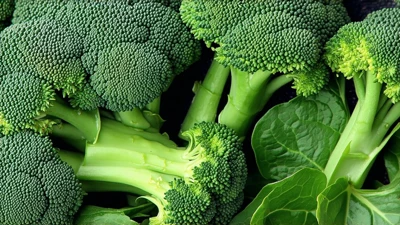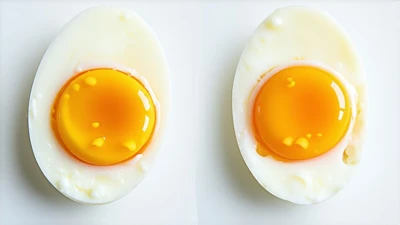
Together with the urgent environmental concerns, health considerations are also a vital aspect in the thriving market of purple yam vs purple sweet potato.
When it comes to jewel-hued, nutrient-dense root vegetables, the spotlight often goes to purple yam (ube) and purple sweet potato. Both are praised for their eye-popping colors and health benefits, but what sets them apart? This article breaks down the data and compares those two superfoods across nutrition, taste, culinary uses and more.
Ube vs. Purple Sweet Potato: The Nutritional Showdown
Let's start with the numbers. A side-by-side analysis of their nutritional content per 100g of raw vegetable based on the USDA nutrient database and peer-reviewed studies:
| Nutrient | Purple Yam (Ube) | Purple Sweet Potato |
|---|---|---|
| Calories | 120 kcal | 86 kcal |
| Dietary Fiber | 4.1g (16% DV) | 3.0g (12% DV) |
| Vitamin A | 709 IU (14% DV) | 14,187 IU (284% DV) |
| Potassium | 582mg (12% DV) | 337mg (7% DV) |
| Anthocyanins | 76mg/100g | 32mg/100g |
| Glycemic Index (GI) | 35 (Low) | 44 (Moderate) |
| Carbohydrates | 27g | 20g |
| Protein | 1.5g | 1.6g |
DV = Daily Value based on a 2,000-calorie daily diet.
Key Takeaways:
Calories: Ube is more calorically dense, 120 kcal vs. sweet potato's 86 kcal.
Vitamin A: Dominated by purple sweet potato; 284% DV—important for the health of our eyes.
Rich in antioxidants: Ube contains nearly 2.5x more anthocyanins (linked to anti-aging benefits).
Glycemic index: Ube has a lower GI (35) and thus is better for blood sugar regulation.
Advantages: Where Each Shines
Antioxidant Rich: With 76mg/100g of anthocyanin, ube beats purple sweet potatoes as the ultimate weapon against oxidative stress.
FIBER CHAMPION: UBE'S 4.1G fiber per serving is good for your gut, but sweet potatoes aren't a bad choice.
Diabetes-Friendly: Ube has a lower GI (35 compared with 44), making it easier on blood sugar, according to a 2021 Journal of Food Science study.
Culinary Uses: Both are gluten-free, but ube's creamy consistency lends itself to desserts like Filipino halaya.
Beyond the Basics: Health Benefits
Anti-Inflammatory Properties: Though both have anti-inflammatory compounds, ube's higher anthocyanins may decrease arthritis risk (Source: Phytotherapy Research).
Heart health: The potassium in ube (582mg) helps regulate blood pressure; sweet potatoes provide magnesium for vascular health.
Skin & Immunity: Sweet potatoes' vitamin A aids skin repair, and ube's vitamin C (17mg/100g) aids collagen production.
The importance of flavor and texture in food.
| Factor | Purple Yam (Ube) | Purple Sweet Potato |
|---|---|---|
| Sweetness | Rich, vanilla-like sweetness | Mild, earthy sweetness |
| Texture | Creamy, moist when cooked | Starchy, fluffy |
| Cooking Method | Best steamed or boiled | Ideal for roasting or baking |
Personal Take: I've played with both, and ube's natural sweetness adds depth to desserts without extra sugar, and purple sweet potatoes are a natural fit for savory dishes, in roasted veggie bowls, for instance.
AUDIENCE APPEAL: WHO LIKES HOW?
Cultural Context: Ube is a traditional Filipino ingredient (for example, ube halaya), while the purple sweet potato is a favorite in Western vegan cuisine.
Fitness Fans: Athletes might choose sweet potatoes to fuel their workouts as they are lower in calories and digested faster.
Recipes to Try
Ube: Mix up ube pancakes or ice cream for a little tropical twist.
Purple Sweet Potato: Roast some wedges with rosemary or add them to soups for a nutrient boost.
Other Considerations
Cost: Ube is more expensive to find in the U.S. ($4–$6/lb) because of importation costs, while purple sweet potatoes can be found for an average of $2–$3/lb.
Sustainability: Both are drought tolerant, but sweet potatoes need fewer pesticides.
Final Verdict
Choose Ube If:
You focus on antioxidants and gut health.
You're making desserts or creamy dishes.
If you are looking for Purple Sweet Potato:
Low-caloric diets and vitamin A are important.
You want a flexible, value-for-money solution.
Both should have a place in a balanced diet — so why not switch them out according to your needs?
Sources of Data:
USDA FoodData Central
Journal of Food Science (2021)
Philippine Journal of Crop Science

















